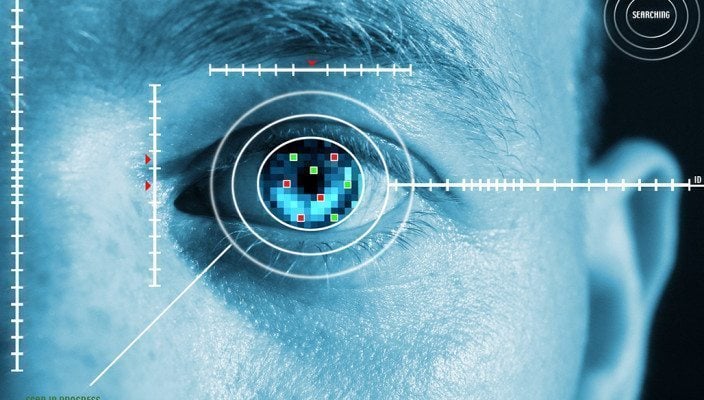WEARABLE TECHNOLOGY FOR LONE WORKER PROTECTION
Jan 14, 2016 • Features • lone worker protection • wearables • smart clothes • Smart Glasses • Technology
Editor-in-chief Kris Oldland hightlights three technologies that could help field service organisations enhance protection for employees working alone, reduce potential risk and fulfill duty-of-care responsibilites.
The field service worker is often required to work alone and for the field service organisation this presents a large number of challenges of its own. Legislation across countries varies in this respect but at the very least it is the employer's moral obligation to ensure that any of their employees including those in the field have suitable processes in place to help ensure their safety.
Fortunately, technology is proving an ever-reliable tool to help automate many of these processes and as the continuing trend of wearable technology continues to evolve so will the potential new tools for lone worker protection.
New developments are happening all the time in this exciting space but in this article lets take a look at three concepts I’ve come across recently that could genuinely offer additional lone worker protection.
-
Smart Glasses
Whilst perhaps the most high profile brand of Smart Glasses, Google’s Glass project met an abrupt end to its well publicised beta program the fact remains that the Smart Glasses market whilst still embryonic remains vibrant.
However, whilst there is a consumer niche for the devices in areas such as extreme sports, many manufacturers and developers of smart glasses, including Google are turning their attention to the world of business as a target market and field services is an obvious core sector.
For the lone field worker the ability to receive notifications and instructions whilst keeping both hands free could be a vital health and safety feature, particularly for example for engineers working in high risk environments such as an electricity pylon or scaffolding etc.
Other benefits of Smart Glasses in field service are evident such as the opportunity for more skilled engineers to guide less qualified colleagues through a repair with a true ‘see-what-I-see’ viewpoint. However, it is the safety aspect that could perhaps be the biggest selling point for Smart Glasses when it comes to adoption by field service companies.
-
Bio Sensor clothing
It might be the newest area of development for wearable technology, but Bio Sensor clothing is perhaps one of the most exciting when it comes to the protection of field service workers.
The health and fitness sector is already awash with wearable clothing designed to monitor biometric data ranging from wearable vests, socks and even false teeth. However, once again the applications for these wearables have a perfect place amongst field service engineers.Bio Sensor clothing is perhaps one of the most exciting when it comes to the protection of field service workers.
For example a vest that detects heart rate could be invaluable for the lone worker when they are behind the wheel.
One can’t help but think that the tragedy just under a year ago year when Harry Clarke fainted at the wheel ploughing his bin lorry into pedestrians in Glasgow city centre, killing six people. Had Clarke been wearing a bio-monitoring vest, perhaps even connected to an Bluetooth enabled engine cut-off mechanism, then perhaps this tragedy could have been avoided.
Due to the nature of their roles, field engineers are often alone behind the wheel and this is just one potential use of bio sensor clothing that could help not only protect them but also those they share the roads with.
-
Wearable cameras
The potential for wearable cameras for helping secure lone workers is absolutely huge. London's Metropolitan Police force is utilising these devices - they are light enough to not impair the wearer in any way but are also capable of not only capturing and recording video but also of transmitting that data live via either a 3G or 4G signal.
What this means is that simply by triggering a panic button on their person should an engineer find them selves in trouble for whatever reason the team back in HQ can instantly log-in and see the situation in real-time. Also as the cameras are capable of utilising GPS, triggers could be put in place for the camera to send an alert and start streaming should an engineer leave an accepted area.
Such visibility into lone workers can prevent them becoming isolated in the event of any threat to their security and as such can also go a long way to helping ensure our lone workers are as safe as they possibly can be.
These are just three potential applications of wearable technology that can help protect our lone workers, but there are many more. As employers it is our duty to ensure that we embrace the emerging field of wearable technology in order to further enhance the safety of our lone workers in the field.





















 Field Service News is published by 1927 Media Ltd, an independent publisher whose sole focus is on the field service sector. As such our entire resources are focused on helping drive the field service sector forwards and aiming to best serve our industry through honest, incisive and innovative media coverage of the global field service sector.
Field Service News is published by 1927 Media Ltd, an independent publisher whose sole focus is on the field service sector. As such our entire resources are focused on helping drive the field service sector forwards and aiming to best serve our industry through honest, incisive and innovative media coverage of the global field service sector.
Leave a Reply